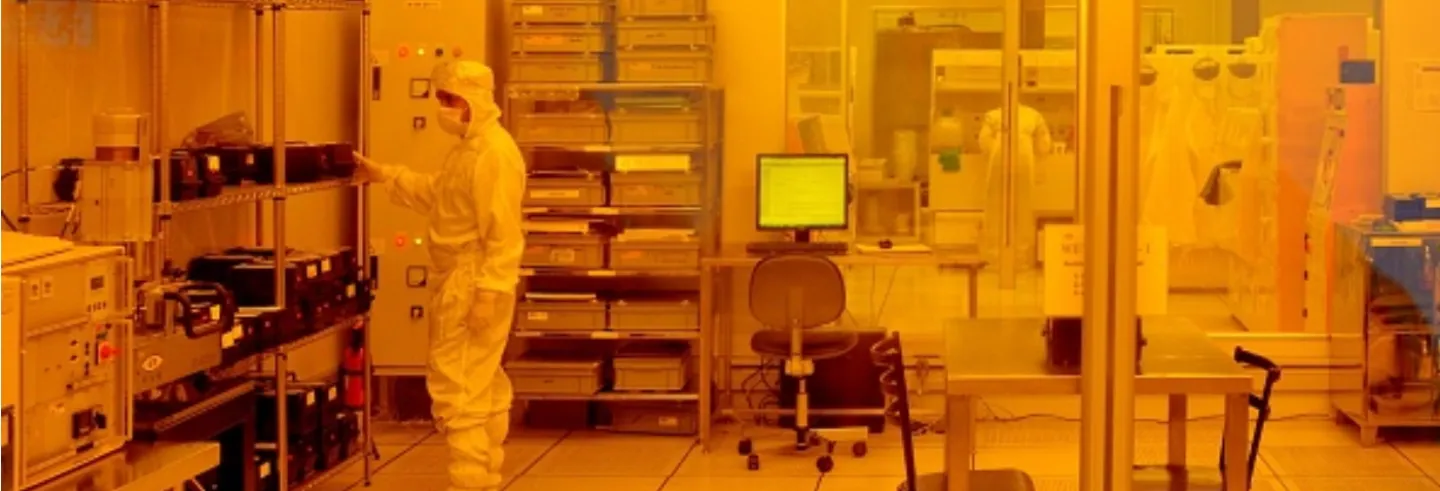Foxconn announced on 10 July that it decided to terminate its partnership with Vedanta for a semiconductor chip manufacturing plant in Gujarat. Much political capital was invested in that joint venture by no less than the prime minister. The decisions included changing its location from one state to another. Hot on the heels of the joint venture’s termination came another report that US-based chip maker Micron would set up a semiconductor “testing and packaging” unit in Gujarat.
This one-step-forward and one-step-backward progress report on an industrial policy that was packed with government-backed incentives and announced a few months ago warrants closer scrutiny.
First, it is rare to witness the cancellation of a joint venture that had been announced by the highest authorities in the country. Even before the Vedanta-Foxconn joint venture was called off, it was unclear what type of chips it proposed to manufacture. We have to ask the crucial question: is there is a roadmap or some sort of an operational document guiding the country’s semiconductor policy?
Foxconn is a world leader in manufacturing electronics goods, particularly iPhones, but it is a fringe player when it comes to manufacturing semiconductors.
Such a policy should outline what type of chips (measured in nanometres or nm) India wants to manufacture, and what part of the semiconductor value chain India wants to enter. Most importantly, the policy should first answer the question of why India should be pursuing semiconductor manufacturing in the first place. If such a document with a roadmap exists, it should be able to answer the circumstances of the Foxconn-Vedanta retreat.
Scepticism about the existence of such a policy document gains currency when we examine the profiles of the partners that came together to announce the now-abandoned semiconductor plant in the country. Foxconn is a world leader in manufacturing electronics goods, particularly iPhones, but it is a fringe player when it comes to manufacturing semiconductors. Vedanta is a big player in many fields but it has little experience that is relevant to semiconductors.
Today, the semiconductor industry is a tight club of a few big boys [...] You either need one of them on your side or you need an open tap of resources to take them on.
This criticism can be countered by arguing that a few decades ago a potato farmer from Idaho in the US took up semiconductor manufacturing. That company has since grown into Micron. It can also be said that much of India’s industrial development has come from incentivising its diversified conglomerates to partner with international players across various sectors.
The unravelling of the Foxconn-Vedanta joint venture shows that these notions are not very relevant when it comes to manufacturing semiconductors or chips. More than three decades have gone by since that potato farmer took up manufacturing chips in a sunrise sector that at that time had a relatively low entry barrier and was open to all.
Today, the semiconductor industry is a tight club of a few big boys who dominate everything from its design to supply. To break into this club, you need one of these big boys like Nvidia, Taiwan Semiconductor Manufacturing Company (TSMC), Micron, Samsung, or SK Hynix on your side. Or you need an open tap of resources to take them on. China has attempted to follow the second path but with limited success so far.
The two players who came together to forge the now defunct joint venture were not one of the big boys. The plan they proposed had nothing of the boldness that China has displayed. But the announcement that Micron would set up a “semiconductor plant” in Gujarat was well timed to neutralise news of the joint venture not taking off. It seemed to indicate that India had finally managed to get one of the big boys to fulfil its ambition of manufacturing chips.
However, Micron’s proposal is for a unit that will “test and package” chips, not manufacture them.
Manufacturing and testing and packing are distinct activities in the semiconductor value chain that starts from chip design and goes all the way to chips being assembled as a part of larger circuits for various uses. The testing and packaging of semiconductors is a specialised activity that involves multiple steps that are technical and demand precision.
Note that it is neither the design nor manufacturing of these chips that Micron plans to bring to India. It is the one replicable part of the semiconductor value chain which Micron proposes to carry out in India. It is something that can be established by anyone anywhere in the world. To appreciate this point, one has to be cognisant of the global chip war currently playing out between the US and China in which geopolitics is inextricably enmeshed. It was the hawkish John Bolton, the National Security Advisor during the Donald Trump presidency, who saw China’s advances in technology and semiconductors as a threat to the US and initiated a series of actions. His interventions saw the likes of Huawei being forced out of the West in a matter of months.
The result were a series of laws the US brought in very fast, spearheaded by the Chip Act. These laws imposed restrictions on all players who had anything to do with the semiconductor value chain.
Post Covid-19, the US and its allies woke up to the reality that semiconductors or chips powered their economies and that nearly all of them were manufactured in the Greater China region, with Taiwan as its nucleus. They learnt that China might be weaponising the world’s semiconductor reliance on the region to its advantage. They also learnt that the current semiconductor supply chain was not only Greater China-centric but that it also had leakages that worked to China’s advantage.
For instance, new chip designs made by labs in the US were quickly copied by Chinese foundries in a matter of months, thereby reducing the time-lag advantage in chip designs, which has a bearing on their speed, processing power, and use. The result were a series of laws the US brought in very fast, spearheaded by the Chip Act. These laws imposed unprecedented restrictions on players who had anything to do with the semiconductor value chain – core or fringe. For instance, TSMC, the largest chip foundry in the world, was explicitly told to stop supplies of chips to Chinese electronics brands.
Dutch multinational corporation ASML specialises in the development and manufacturing of photolithography machines, which are used to manufacture computer chips, especially the most advanced ones. A few weeks ago, the Netherlands announced its plan to restrict engagement with China for such equipment. Research scientists of US companies working on chip design reportedly come under surveillance if even found to be searching about Chinese visas on their mobile phones.
The aim of all these China-centric curbs by the US and its allies is to dent China’s plan of being on the cutting edge of semiconductor manufacturing, which they fear is a front for its ambitions to weaponise emerging technologies such as artificial intelligence (AI). Both the US and Europe have rediscovered a love for in-sourcing and have nudged the big boys of the chip industry to build foundries on their shores.
The insight here is that the semiconductor value chain is now divided into two parts. The first is the part that is replicable and non-threatening to the US. For instance, the manufacturing of legacy chips such as 40nm/28nm digital or analog chips. The design of these chips is open source and their uses are in undifferentiated products such as car stereos and washing machines. The packaging and testing of chips is a specialised act but a replicable one and it does not invoke national security concerns for the US. So the US does not mind if such activities are carried out in countries that are aligned to its interest to some degree, if not all.
Both Micron and the US do not mind the plant’s presence in India, more so because reports indicate that 70% of it will be funded by Indian taxpayers while Micron will get to own all of it.
The second part of the value chain is the part that is high on proprietary knowledge and is the source of competitive advantage. This would include the design of new sub-4 nm digital chips that go into AI-powered computing and technologies and their production, or the tools that go into the foundries that produce them. The US and the European Union are clear that they intend to either fully or partly own the proprietary part of the value chain.
Micron’s announcement of a chip testing and packaging plant in Gujarat falls into the first category. Both Micron and the US do not mind its presence in India, more so because reports indicate that 70% of this plant will be funded by Indian taxpayers while Micron will get to own all of it. For India, it provides a small opening to put its foot in the door of chip manufacturing but nothing beyond it.
The criticism here is on two counts. The first has to do with the fundamental question of India’s need to enter the current chip war, which demands an open tap for money and other resources. There are other major economies that are content with remaining on the sidelines while making sure that their politics is aligned to secure the supply of semiconductors of all types at all times. They include Canada, Brazil, Norway, Australia, South Africa, and Switzerland. Not everyone is jumping on the chip manufacturing bandwagon at any cost. India’s attempt is seen as that of a desperate actor wanting to enter this club at an extremely high cost without domestically investing in human and social capital.
The second criticism is the lack of a semiconductor policy that acknowledges a global chip war that is now under way and objectively outlines India’s role in it. In doing so, the policy needs to lay out the purpose of India wanting to enter this club and the approach it plans to take, reconciling both its advantages and vulnerabilities. To do so, it will need to honestly answer questions from a perspective that considers the geopolitics, opportunity cost, and the multiplier effects expected from such a pursuit.
There is an out-of-the-box solution to India’s dilemma ... This is to ask researchers in Indian universities to come up with an alternative to the current method of computing and powering machines that relies on semiconductors.
Such a roadmap can argue that it is in India’s interest to enter this sector to trigger the creation of a broader ecosystem domestically for the larger good and for the purpose of competing with China, a major economy that it shares a border with. If such a roadmap exists, it can defend Micron’s announcement by stating that India’s competitive advantage lies not so much in chasing the proprietary part of the value chain but in building expertise of scale in seemingly commoditised activities that customers around the world require. It could go on to say that in executing such a vision, India can dominate the market for such an activity. The Indian taxpayer-funded red carpet rolled out to Micron could then be justified as the first step in that direction.
There is an out-of-the-box solution to India’s dilemma other than producing a roadmap. This is to ask researchers in Indian universities to come up with an alternative to the current method of computing and powering machines that relies on semiconductors. It would throw a curve ball at the whole world if they did. China’s chiplet programme is aimed at such a goal. But that will be a tall order given the research subjects that are currently in vogue in our universities and the lack of funds to pursue anything outside this.
It will be in India’s interest to addresses the scepticism around its semiconductor policy and provide comfort and clarity to stakeholders who wish to associate with it. It will also need to relinquish the thinking that a policy on semiconductors can be crafted with the same mindset that was deployed for guidelines on e-commerce, retail, toys, tiles, motorcycles, and so on. Till such time as we have a clear policy, the criticism will stand that the present semiconductor manufacturing roadmap of India is a game in which multiple darts are thrown at a board in the hope that one of them will hit the bull’s-eye. Whatever the cost.
Ankur Bisen is with Technopak Advisors, and the author of Wasted: The Messy Story of Sanitation in India, A Manifesto for Change (Macmillan, 2019).









